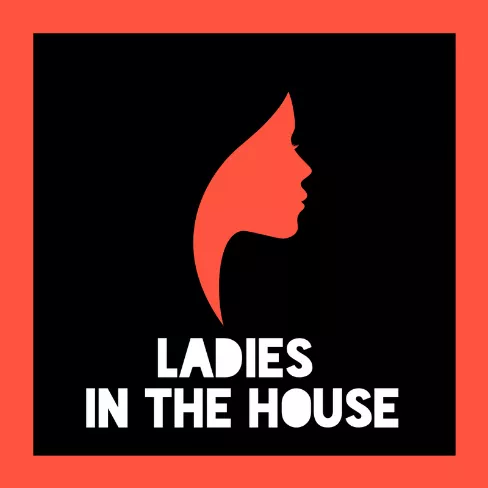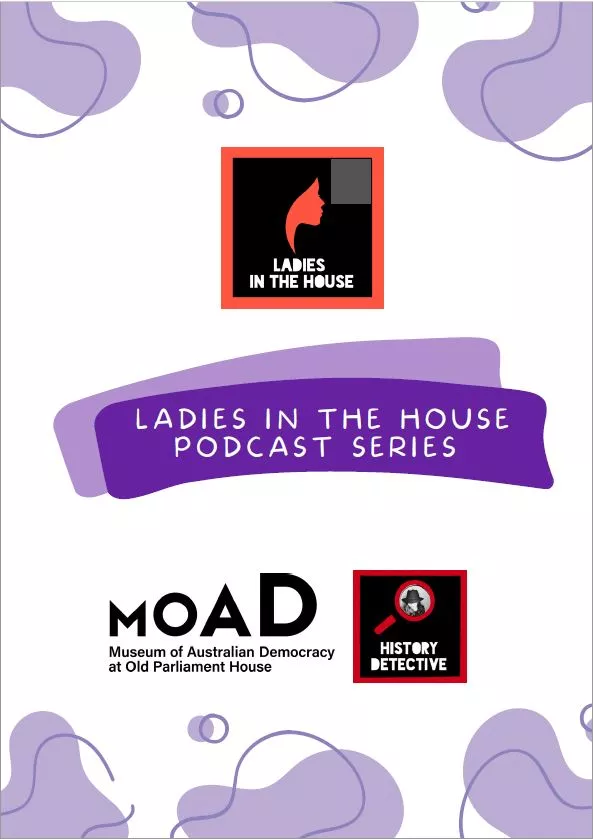Ladies in the House: Episode 8 Enid Lyons
Intro (music)
Hi, this is Kelly Chase and you are listening to Season 3 of a Museum of Australian Democracy and History Detective Collaboration: Ladies in the House. In this 4-part series we are going to celebrate the lives of four incredible women and how they contributed to Australian democracy.
Today I would like to introduce you a remarkable woman—the first woman to ever be elected into the House of Representatives—Dame Enid Lyons. In 1943 she was sworn in on the very same day that Dame Dorothy Tangney was sworn in as the first woman in the Senate. You can hear Dorothy Tangney’s story in the previous episode.
Now, if you think the name Lyons is familiar, it is because her husband was a prominent politician Joseph Lyons, so prominent in fact that he was the Premier of Tasmania and then he moved to federal politics and became the 10th Prime Minister of Australia. Joseph Lyons was Prime Minister from 1932 until he died from a heart attack while in office in 1939.
Joseph and Enid’s courtship was a little unconventional for the time, and even by our standards today. You see when they first met, Enid was only 15 years old, and Joe was 18 years older than her. Needless to say, Enid’s mother was not happy about this relationship and forbid them from marrying until Enid was 17 years old. But they waited it out, and were married when she was 17 and he was 35. They were happily married for the rest of his life during which time Enid had 12 children.
One of the interests that first drew Enid and Joe together was their love of politics. Enid was a passionate and talented speech writer; in fact, she wrote many speeches for her husband during his political career.
However, Enid had politics in her blood and her husband was supportive of her political ambitions and encouraged her to write speeches herself and even run for an election. So, in 1925 she stood as a candidate in the Tasmanian elections. Interestingly, her own mother also ran in the same election, but in a different seat. Unfortunately, Enid lost the election by 60 votes.
When her husband died in 1939, she was only 41 years old and had 11 children to support. This was a time when superannuation funds for politicians didn’t exist and there was very little by way of widow’s pensions. The government made a suggestion that she be given some money to support her 11 children. This resulted in an uproar in both the parliament and media, to the point that Enid was sent hate mail and death threats.
This did not deter her, four years later- with encouragement from her daughter- she decided to run for a seat in the House of Representatives and she campaigned extremely hard. However, it was not an immediate victory; the voting count was very close and she won the seat on preferential votes. The preferential voting system is where, on the ballot paper voters can write who their second, third, fourth and fifth choices are, and if their first preference is not elected, their vote will go to their second choice and so on. In August of 1943, while she was ironing and listening to the radio, it was announced that she had become the first ever woman to be elected into the House of Representatives.
In her first speech to parliament, she addressed many of the issues that she wanted to focus on as a politician. Some of those issues were, the declining birth rate, social security, inadequate housing, and the importance of implementing post-war policies. Throughout her political career she continued to address issues that directly impacted women and families such as discrimination against married women in the workforce, widow’s pensions, maternity allowances and child support amongst many other concerns.
After her career in politics, Enid published 4 books, was a newspaper columnist, and she remained active in public life, promoting family and women's issues and she became the commissioner for the ABC.
In 1980 she was granted an Order of Australia. The Order of Australia is an award that recognises Australians who have demonstrated outstanding service or exceptional achievement. She passed away one year later, leaving behind not only a trailblazing legacy of political and social achievements; from her 11 children, she also left behind more than 100 descendants.
Call to action (music)
What I would like you to think about today is, what are the issues happening in society that you feel strongly about? And what platforms do we have in the modern age to spread a message of change?
This is Kelly Chase, on the case.
Before I go, if you are a teacher and would like a free lesson plan for this episode or any of the Ladies in the House season one and two episodes, you can head to the Classroom Resources page on the Museum of Australian Democracy website to download the lesson plan. Lessons include pre-listening vocabulary, reflection questions, a call to action activity and the transcript. You’ll find a link to the page in the show notes.
See you next time!







